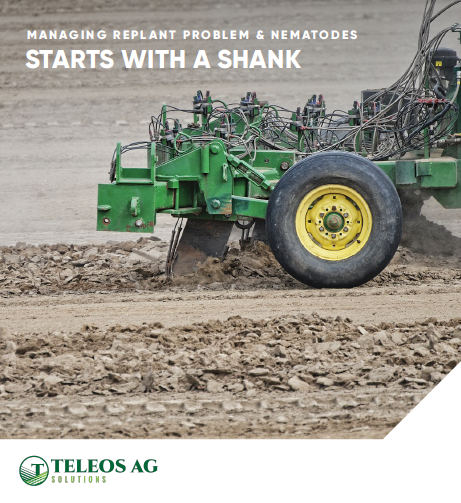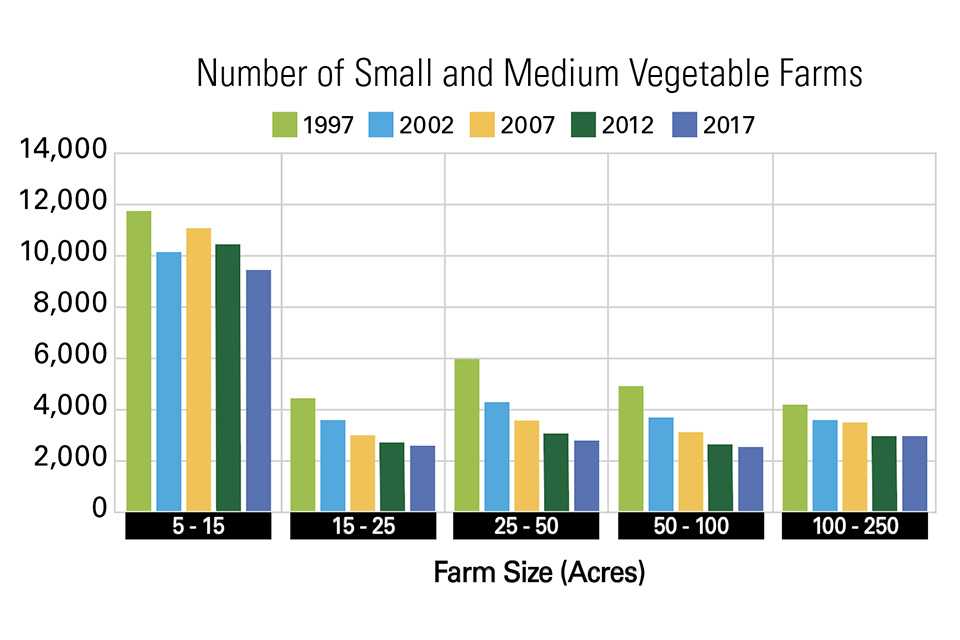One Way Small and Medium Farms Can Get Better Prices [Opinion]
The U.S. food channel has had a profound impact on small to medium farms. Since 1997, the number of vegetables farms in each size category between 5 and 250 acres shrank. In fact, there are fewer than half of the vegetable farms with between 25 and 100 acres today than in 1997.
The modern food chain favors high volume with low prices. Growers need to produce enormous amounts of vegetables in order to survive on the low prices they receive. If a grower gets, say, 24 cents for a standard unit of carrots or $1.50 for potatoes (numbers pulled from the May 2019’s Produce Price Index), what remains after applying all the expenses are just a few pennies. If all that’s left is 5 cents per unit, you must sell 100,000 to earn $5,000 profit.
This is the way its been for decades. What changed in the last 20 years? Transportation costs. Food-safety-related expenses. Labor shortages driving up wages.
That’s why this month’s American Vegetable Grower magazine cover story grabbed my attention. Ideas like this promise to help turn the tide for small to medium growers.
In the cover story, the owners of Argus Farm Stop, Bill Brinkerhoff and Kathy Sample, explain the farm-stop model and how growers can operate one in their own part of the country. In the simplest terms, a farm-stop is a hybrid between a grocery store and a farmers market. Growers own the produce and get 75% of the sale price. But, like a grocery store, farm stops have a central checkout and have quality refrigeration.
One of the most striking things about the farm-stop model is that it isn’t cannibalizing growers’ incomes from other outlets.
Many of these farmers rely on farmers markets and their own on-farm markets to make ends meet.
“Our suppliers continue to sell to farmers markets and tell us they’re doubling their weekly income by supplying Argus [Farm Stop],” Brinkerhoff says.
I think the answer to a robust small and medium farm industry will be innovative ideas like the farm-stop model. These creative business ideas will spring from farm country, not Wall Street or high-end MBA programs. Start talking to your fellow growers and civic leaders about new ways farms can build up the local economy. Our industry’s future depends on your inventiveness.
Oh, One More Thing
A key goal for farm-stop stores is to help small and medium farms thrive. They’ve been in decline for a long time, and this new store model promises to halt or even reverse the trend for their suppliers.
1. In the past 20 years, small and medium farms have eroded.
2. To give this perspective, the U.S. has lost many farms since its peak in 1935, when there were almost 7 million farms of all types in the U.S. Today, there are about 2 million farms. That’s a 71% decrease.
3. Smaller farms have had a sharper decrease. Since 1950, the U.S. has lost 99% of farms that are between 10 acres and 100 acres.











